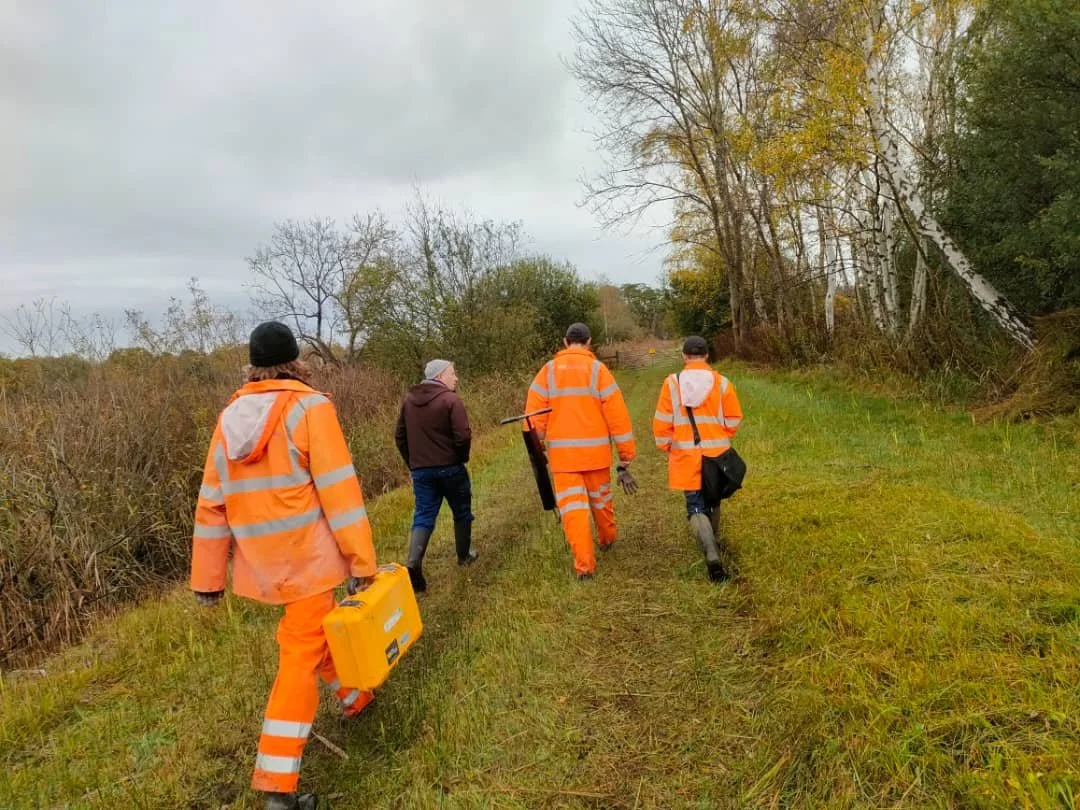Peat coring- FEPP
The Fens are an iconic part of the Eastern English landscape. Notoriously flat, they cover approximately 1,500 square miles, spanning Cambridgeshire, Norfolk, Suffolk and Lincolnshire. Historically, the Fens were once vast freshwater and saltwater wetlands; low-lying areas of land that were susceptible to flooding. Humans had long been battling with nature to secure this land for agricultural purposes, before they successfully began to drain the land in the mid-17th century. The area was particularly attractive due to the presence of large amounts of nutrient-rich peat, formed under the anoxic ground conditions of the wetlands. Draining the land came at a cost however, causing the once saturated peat to dry up and shrink which resulted in falling land level and therefore increased vulnerability to flooding. It wasn’t until more recently that we started realising the biological value of peatland, which stores more than twice the amount of carbon contained in global rainforests. The peatland in the Fens has been seriously degraded, but hope is not completely lost…
Over the past few months, Exo Environmental has been working with Lincolnshire Wildlife Trust (LWT) to establish baseline peat coverage data across the Fens of East Anglia. The work has been conducted in peatlands within the ‘FEPP’ (Fens East Peat Partnership) area and covers a range of different fens, marshes and agricultural land. It is hoped that this data can inform decisions about restoration and management techniques, such as rewetting the land for the purpose of (peat) conservation.
We have already completed over 500 manual peat cores in a variety of locations including Lakenheath, Burwell and Tubney, and Chippenham, with more projects planned for the new year. Landowners of these sites such as Natural England and National Trust can use the soil data we produce to establish priority sites in regard to their abundance of peat. Historic and current unsuitable land practices such as deep drainage agriculture have changed the natural processes within the peatland, with the majority now releasing carbon rather than sequestering it.
As anthropogenic carbon emissions continue to increase exponentially, it is crucial that we act imminently to protect and regenerate areas of healthy peatland that have been subject to degradation. It is hoped that with their continued management, the wetland environments which facilitate peat formation can be restored and carbon sequestration can occur again.


